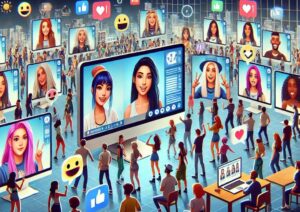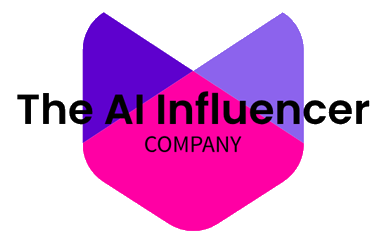Many have been in debate about AI versus human influencers. It’s a hot topic even among my neighbors.
While some argue that human influencers have irreplaceable authenticity and creativity, AI is reaching new frontiers in generating captivating and personalized content. As the technology matures, virtual influencers show promise in complementing or even surpassing their human counterparts across key marketing metrics.
This article looks into what makes each of them good or not so good. We’ll see how they affect the world of social media. Get ready for interesting stories, examples, and thoughts from people who know a lot about this. Let’s dive into this exciting topic together. But first, let’s define what influencers are.
What are Influencers
Influencers are individuals who have cultivated a large, dedicated following on social platforms like Instagram, YouTube and TikTok. They build authority and expertise around specific interests like fashion, gaming, travel, politics, and more.
What Influencers Do for Brands
- Influencers skyrocket brand visibility and reach.
- They offer believable shout-outs, ramping up user engagement.
- They boost sales by hitting the right audience.
- Influencers add a genuine feel to products or services.
What are AI Influencers
AI influencers are computer-generated personas that appear human, but are powered behind the scenes by:
- CGI (computer-generated imagery) to create lifelike visuals
- AR (augmented reality) to build immersive experiences
- Sophisticated machine learning algorithms
- Neural networks and generative AI to mimic human behavior
Current popular AI influencers
Top brands are starting to leverage these AI influencers in their marketing campaigns, captivated by the promise of more control, consistency, and creative possibilities through these virtual beings. These AI influencers include:
- Lil Miquela – CGI model and musician with over 3 million Instagram followers
- Knox Frost – male AI fashion and lifestyle influencer
- Shudu Gram – CGI supermodel and activist
- Dagny the Dog – CGI pet influencer
- Daisy Coop – AI DJ and music producer
However, AI influencers also face some distinct limitations compared to real humans when it comes to authenticity, engagement and creativity.
Authenticity and Engagement
A key reason human influencers tend to drive higher engagement is their perceived authenticity and ability to form emotional connections with followers.
According to psychology research, humans are wired to bond through empathy. We instinctively seek real human stories and imperfections. However, audiences have trouble relating to AI influencers on a deeper level due to their artificiality and manufactured narratives.
However, a study found that AI influencers, who are designed to avoid the limitations of real humans, are believed to have a more prominent presence than human influencers on social media.
Case studies also showcase superior engagement from human influencers:
- A nano-influencer campaign for a beverage brand generated a 7% engagement rate and 8x ROI compared to broader social media ads.
- Top fashion micro-influencer Danielle Bernstein drives engagement rates of over 60% on her seasonal shopping guides.
- Lil Miquela’s NBA campaign garnered press but a low 0.5% engagement rate.
These examples demonstrate that authenticity builds trust and community engagement in a way AI has yet to match.
Creative Content and Innovation
Human influencers attract loyal followings partly through showcasing creative flair and originality in their content. They have the freedom to take risks and break formulas rather than stick to repetitive trends. This breeds new styles and cultural trends.
For example, top YouTubers like Mr. Beast pioneer attention-grabbing video formats like elaborate stunts and giveaways that captivate millions. Comedic influencers like Rickey Thompsonmonetize their humorous sketches and candid storytimes that feel fresh and new.
But current AI technology is limited by its data training. AI cannot yet replicate the spontaneity and unpredictability that sparks innovative breakthroughs. It tends to stay safely within the guardrails of existing patterns and tropes.
The Limitations of Current AI Influencers
While AI influencer technology is rapidly evolving, current platforms have noticeable limitations when it comes to matching human effectiveness across the metrics that matter:
Lack of Emotional Intelligence
- Unable to gauge social cues or respond to nuanced feedback.
- Struggle to show empathy, vulnerability, humor.
Superficial Content
- Repetitive and formulaic instead of imaginative.
- Focus on trends rather than breaking the mold.
Inauthentic Interactions
- Generic, robotic responses lack a human touch.
- No ability to form true parasocial bonds with followers.
Measurable Business Impact
- Conversions and sales lag due to a lack of trust.
- Lower ROI compared to human influencer campaigns.
Limited Reach
- Niche audiences are drawn to novelty rather than passion for persona.
- Reliant on artificial followers rather than organic growth.
This combination of factors results in an inauthentic, transactional experience that leaves most audiences cold compared to connecting with relatable human creators.
Limitations of Human Influencers
While humans currently maintain competitive edges in activating audiences, individual people do face foundational restrictions curtailing their influencer reach – barriers surpassable by virtual assets.
Physical Limits
- Energy caps content creation volume
- Injury/illness disrupts
- Travel mobility constraints geographic impact
Personality Flaws
- Ego destroys likeability
- Drama alienates fans
- Greed repels empathy
Mortal Fate
- Interests change over life chapters
- Aging impacts relevancy
- Death retires all future output
As bio-beings, burnout and expiration dates apply declining relevance over enough eclipses of the sun. Seedy scandals stain public personas as well. Such natural shortcomings leave engagements on the table where digital dynamos shine unlimited.
While the contours of human connection wield wonders machines cannot manifest, marketers must mind mortal undo when weighting goals. There exists a ceiling to individual reach.
The Potential of Future AI
While AI influencers have a ways to go, the technology shows immense promise as it rapidly evolves:
- Generative AI could allow for more variable, personalized content and conversations.
- Sentiment analysis tools can help AI respond better to feedback and cues.
- Backstories and interactive narratives could build more believable personas.
- Hybrid human-AI approaches would allow AIs to learn from successful influencers.
Advancements like these could narrow the engagement gap between humans and AI influencers. The future will likely involve savvy combinations of the unique strengths of both.
But it remains to be seen whether AI will ever truly master emotional intelligence, creativity, and making authentic connections akin to humans. The unpredictability of human nature may prove impossible to replicate.
Still, with exponential progress, we cannot rule out AI matching or exceeding human capabilities down the road.
Conclusion
Evaluating key engagement metrics and specialized strengths reveals that while virtual influencers currently lead in scalability and cost efficiency, human experts still reign in authenticity, vulnerability and expert authority – commanding genuine crowds through connections codes cannot yet crack.
However, economic drivers around endless low-cost automated content will likely progress a rising influx of artificial influencers reshaping the landscape layers ahead. Rather than outright displacement between groups, the ideal strategy likely demands fusion: mixing scalability with humanity to resonate across widening audiences.
There exists untapped potential in blending benefits, multiplying motivation impact overall. Humans provide poignant personalities while behind-the-scenes AI analyzes collective interactions to elevate content styles and timing. We stand stronger together.
For the foreseeable future, budget-conscious branding campaigns will stack solutions based on goals, merging unique low-cost impression volumes with selective human gravity targeting fragile yet fulfilling emotional connections where needed.
The key remains adaptability. As algorithms and avatars advance, the winning influencer blueprint balances machines and people – artificial reach amplified by authentic art. Together, that spells connection at scale.
Talk to us at AI Influencer Company if you want more details.




